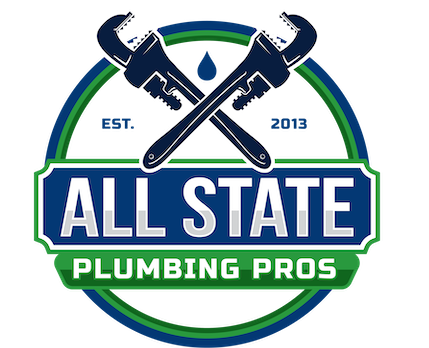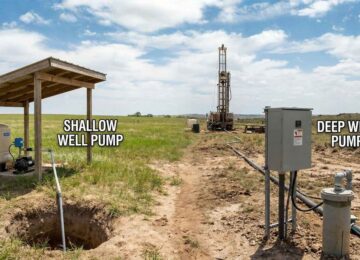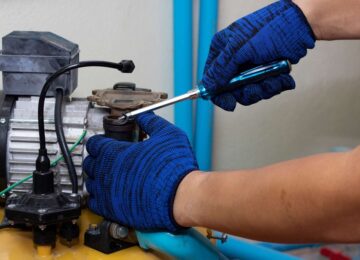During a Connecticut winter, few plumbing problems are more damaging or costly than frozen pipes. When water freezes inside a pipe, it expands, creating enormous pressure that can cause the pipe to rupture. Homeowners can face thousands of dollars in water damage in just a few minutes if a burst pipe is left unchecked. That’s why it’s crucial to learn how to prevent frozen pipes, including proper care of your water meter, before the next cold snap.
Frozen water pipes disrupt hot water access, lower water pressure, and sometimes stop the water supply entirely. Even a single cold snap can lead to a burst pipe in crawl spaces, attics, or exterior walls where insulation is thin. Frozen pipes are more common in unheated areas like garages, outdoor faucets, or hose bibs connected to water sprinkler supply lines. Prevention requires simple, affordable steps such as wrapping pipes in insulation, sealing cracks, and allowing a cold water drip from faucets served by exposed lines.
If you suspect your home has vulnerable plumbing, don’t wait until freezing temperatures set in. Contact our residential plumbing experts in Connecticut for professional inspections, pipe insulation, and emergency support.
Why Do Pipes Freeze in Winter?
Pipes freeze when the temperature drops low enough to solidify water inside the line. While water freezes at 32°F, most plumbing systems become vulnerable when outdoor temperatures hover near 20°F for several hours. At this point, water supply lines with little or no insulation can quickly freeze solid.
Contributing factors include:
- Exposed pipes in unheated spaces: Lines in crawl spaces, attics, and garages are at higher risk.
- Cold air leaks: Cracks in foundations, open garage doors, or gaps in exterior walls allow frigid air to surround plumbing.
- Poor insulation: Older Connecticut homes often have water pipes running along exterior walls with minimal protection, making them more likely to freeze during severe cold.
When pipes freeze, expanding water creates stress. If the pipe cannot withstand this pressure, it bursts, flooding the home. This is why sealing leaks and insulating pipes, insulating water pipes, and maintaining warmer air indoors are essential steps.
Common Areas at Risk for Frozen Pipes
Frozen pipes usually occur in predictable locations those with low insulation and exposure to cold weather.
- Basements and crawl spaces: These areas often have little insulation and sit close to the cold ground.
- Exterior walls: Water pipes in walls that face outside are more likely to freeze during severe cold.
- Attics and garages: If garage doors remain open or insulation is thin, cold water pipes inside can freeze.
- Outdoor faucets and hose bibs: Water remaining in sprinkler supply lines or swimming pool pipes can freeze solid, leading to cracks or leaks.
By understanding where pipes freeze most often, homeowners can take preventive steps before the first deep freeze of the season.
How to Prevent Frozen Pipes (Step-by-Step)
The most effective way to protect pipes is by combining insulation, steady heating, and small adjustments that maintain water flow.
- Insulate water pipes: Wrap exposed pipes with foam sleeves, fiberglass insulation, or heat tape. Insulation keeps pipes warm even in freezing temperatures.
- Seal cracks and air leaks: Use caulk or foam to seal openings where cold air enters around pipes, foundations, and utility lines. Keeping garage doors closed helps maintain higher temperatures.
- Keep indoor heat steady: Maintain the same temperature day and night, at least 55°F. Consistency reduces freezing risk.
- Open bathroom cabinet doors: Let warmer air circulate pipes under sinks and vanities.
- Allow a cold water drip: During severe cold, let faucets drip just enough to keep water moving. Running water, even if only a trickle, helps prevent frozen pipes.
- Drain outdoor faucets: Store hoses, shut off outside hose bibs, and drain water from sprinkler supply lines to prevent ice buildup.
If your home has older plumbing or pipes running through unheated spaces, call a licensed plumber to schedule a winterization service to ensure every vulnerable pipe is properly protected.
Cost of Prevention vs. Cost of Repairs
Prevention is inexpensive compared to the damage caused by burst pipes, and learning how to prevent pipes from freezing can save homeowners significant costs. Insulating water pipes or sealing air leaks costs just a few dollars, while repairing water damage can run into thousands.
| Method | Average Cost | Potential Savings |
|---|---|---|
| Pipe insulation or wrapping pipes | $0.50–$2 per foot | Avoid $5,000+ in burst pipe repairs |
| Outdoor faucet covers | $3–$10 each | Prevent broken hose bibs |
| Heat tape or heat cables | $50–$200 | Keep exposed pipes warm |
| Plumbing inspection | $150–$300 | Detect risks before pipes freeze |
These simple steps are an affordable way to protect pipes, preserve the water supply, and avoid costly repairs.
Long-Term Solutions for Pipe Protection
While basic prevention methods work for most homes, some properties require long-term solutions.
- Heat tape and heat cables: Electric heating cables wrapped around pipes keep them warm during freezing weather.
- Smart leak detectors: These systems alert homeowners when water freezes or pressure builds inside pipes.
- Automatic shut-off valves: Shut off the main water supply automatically if a pipe bursts.
- PEX piping upgrades: Flexible pipes expand with freezing water and are less likely to rupture compared to copper.
Licensed plumbers can install these solutions safely. For Connecticut homeowners with recurring frozen pipe issues, investing in upgrades ensures long-term protection.
Emergency Steps if Pipes Freeze
If your pipe freezes, fast action prevents additional frozen pipes and bursting.
- Shut off the main shut-off valve to stop water pressure.
- Apply heat: Use an electric hair dryer, an electric heating pad wrapped around the pipe, or towels soaked in hot water. Start at the faucet and move toward the frozen area.
- Avoid open flame devices: Never use propane heaters, charcoal stoves, or household chemicals that could ignite or damage pipes.
- Check other faucets: If one pipe freezes, additional frozen pipes may exist. Inspect and thaw them carefully.
- Call a licensed plumber: If you cannot thaw frozen pipes or suspect a burst, professional help is essential.
Household Preparedness Tips
Frozen pipes don’t just impact the homeowner; they affect everyone in the household. That’s why preparation is a shared responsibility.
- Teach family members where the main shut-off valve is located.
- Show children how to safely open cabinet doors under sinks and let water drip during a freeze.
- Keep emergency plumber contact information handy in case water pipes burst.
Families in Connecticut, particularly those in multi-level homes or with little insulation, should practice these steps at the start of winter. Preparedness reduces panic and damage when freezing temperatures arrive.
Conclusion
Knowing how to prevent frozen pipes is one of the most effective ways to safeguard your home during Connecticut’s harsh winters. Simple steps like insulating exposed water pipes, sealing foundation cracks, and letting faucets drip during extreme cold can make the difference between peace of mind and thousands in costly repairs. With preparation, you can protect your plumbing system, maintain steady running water, and avoid the stress of emergency damage.
If you’re worried about frozen pipes, reduced water pressure, or a burst pipe emergency, don’t wait until the damage spreads. At All State Plumbing Pros, our licensed plumbers are available 24/7 to help homeowners and businesses across Connecticut and New York. From preventive pipe insulation, using a portable space heater, to urgent plumbing repairs, contact us today for dependable service you can trust all winter long.
FAQs
How do I stop my pipes from freezing?
The best way to stop pipes from freezing is to insulate exposed pipes, seal air leaks, and keep indoor temperatures above 55°F, especially when it comes to the water supply lines . During a severe cold, let water drip slowly from faucets to maintain flow.
At what temperature will pipes freeze?
Pipes begin freezing at 32°F, but in most cases, they freeze solid when temperatures fall around 20°F or lower. Pipes in unheated garages, crawl spaces, or exterior walls are the most vulnerable, as they can struggle to melt ice during cold spells .
Is it better to shut off the water during the freeze?
Yes. If you are away during a severe cold, shut off the water supply and drain the system. This prevents water remaining in pipes from freezing, expanding, and causing damage.
Can house pipes freeze without bursting?
Yes. A pipe can freeze without bursting if the ice does not block the entire line. However, pressure builds quickly behind frozen areas, so thaw frozen pipes promptly to avoid ruptures.

![How to Prevent Frozen Pipes: Tips Every Homeowner Needs During a Connecticut winter, few plumbing problems are more damaging or costly than frozen pipes. When water freezes inside a pipe, it expands, creating enormous pressure that can cause the pipe to rupture. Homeowners can face thousands of dollars in water damage in just a few minutes if a burst pipe is left unchecked. That’s […]](https://allstateplumbingct.com/wp-content/uploads/2025/10/prevent-frozen-pipes-750x420.jpg)



Leave a Reply